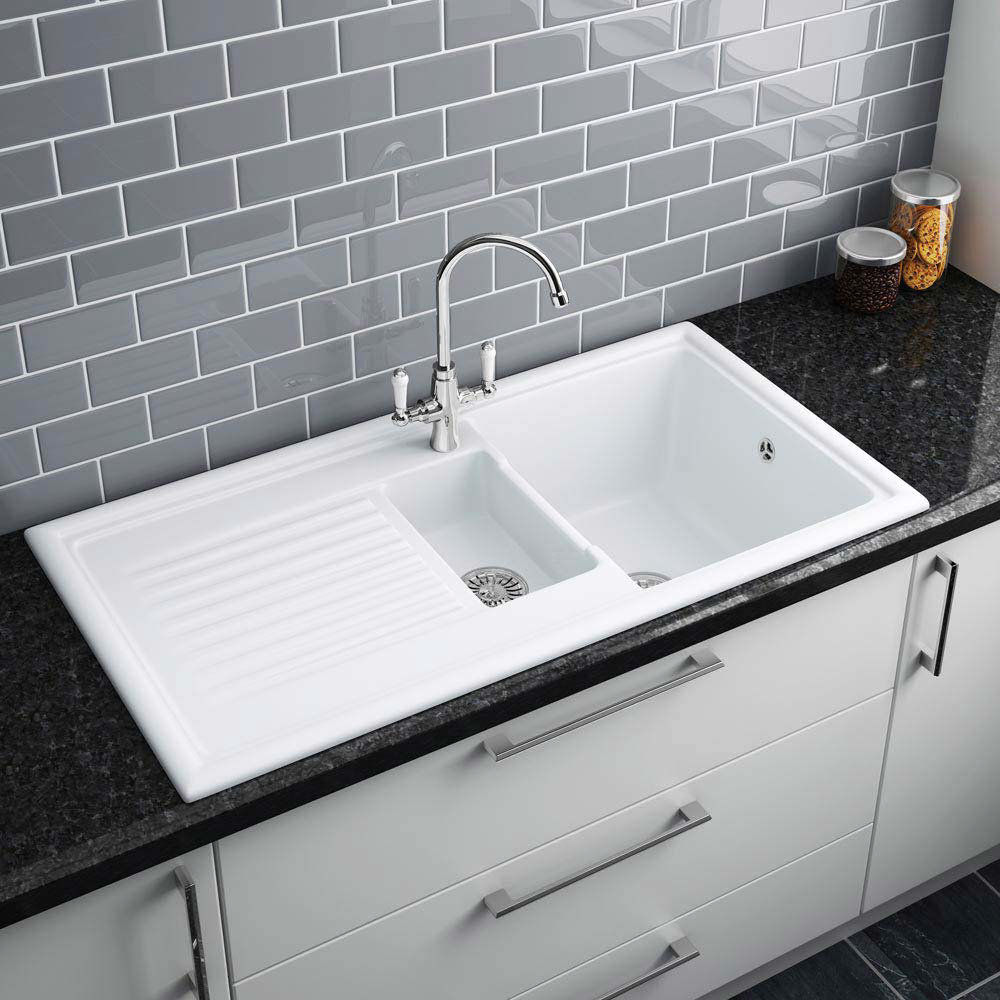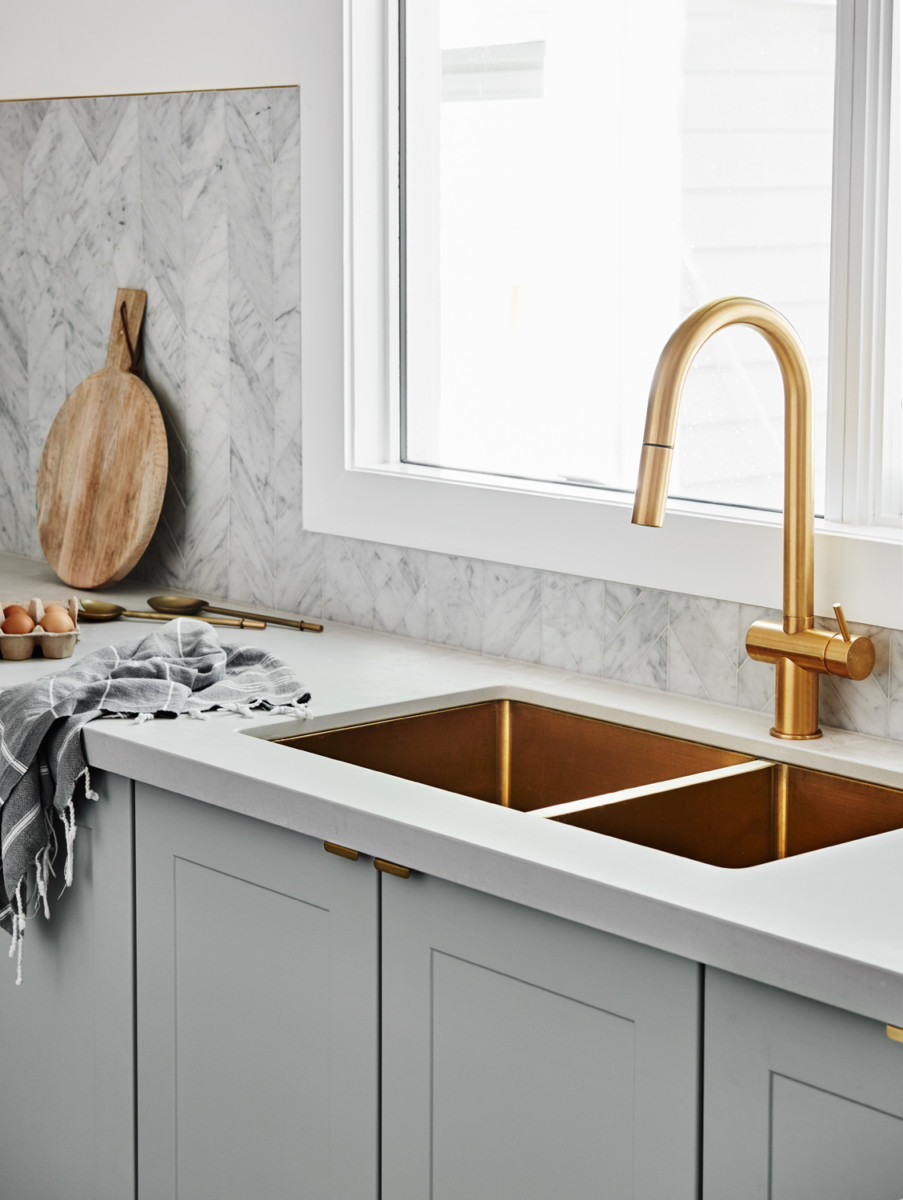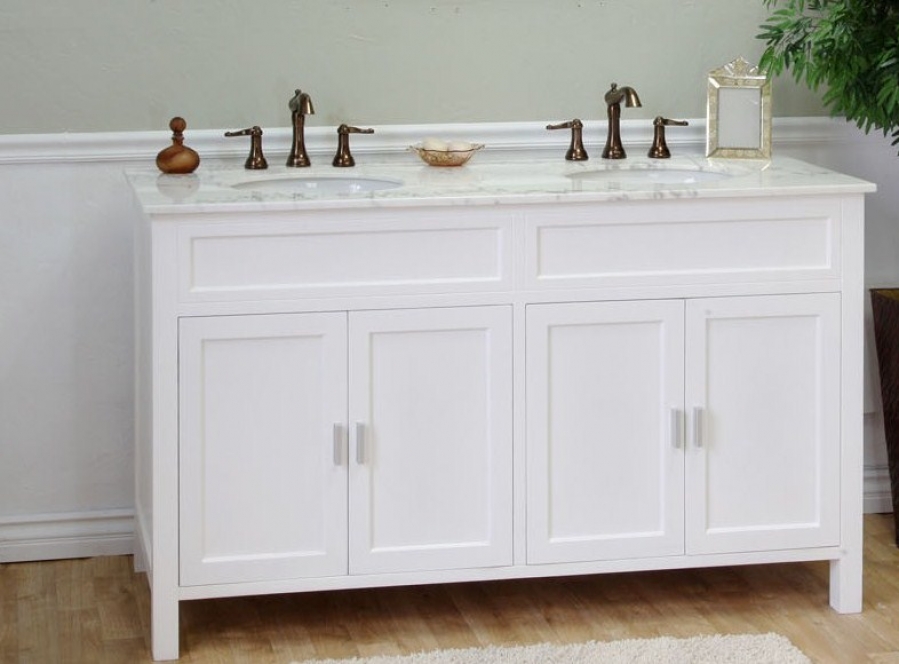When it comes to kitchen design, the double kitchen sink is a feature that can significantly enhance both the functionality and aesthetics of the space. Over the years, I’ve found that having a double sink in the kitchen offers a range of benefits that cater to different cooking and cleaning styles. The most obvious advantage of a double sink is the ability to multitask. One side can be used for washing dishes, while the other side can be dedicated to rinsing, soaking, or even prepping food. This setup makes the kitchen more efficient and organized, especially during meal preparation or cleanup.
One of the key considerations when choosing a double kitchen sink is the material. Stainless steel is a popular choice due to its durability, resistance to stains, and modern appearance. I’ve always appreciated the practicality of stainless steel sinks, as they are easy to clean and maintain, and they tend to blend seamlessly with various kitchen styles. However, if you’re looking for something with a bit more character, you might consider a farmhouse-style double sink made from fireclay or cast iron. These materials offer a more traditional look, and their large, deep basins are perfect for handling big pots and pans.

Another factor to consider is the configuration of the double sink. Some double sinks have equal-sized bowls, while others have one larger bowl and one smaller bowl. In my experience, the choice between these configurations often depends on how you plan to use the sink. Equal-sized bowls are great if you want the flexibility to use either side for any task, but a larger and smaller bowl combination can be more practical for those who often find themselves washing larger items like baking sheets or oversized pots. This setup allows you to use the larger bowl for washing and the smaller one for tasks like rinsing or draining.
The depth of the sink bowls is another important aspect to think about. Deeper bowls are ideal for those who frequently cook large meals or entertain guests, as they can accommodate more dishes and larger pots. However, I’ve found that deeper sinks can also lead to more bending over, which might be uncomfortable for some people. If comfort is a priority, you might want to consider a sink with a moderate depth, which strikes a balance between capacity and ease of use. Additionally, the depth of the sink can affect how much splash occurs during use, with shallower sinks being more prone to splashing.

When it comes to installation, double kitchen sinks can be mounted in several ways, including top-mount, under-mount, or even as a farmhouse or apron-front sink. Each installation type offers its own set of benefits and aesthetic appeal. Top-mount sinks are easier to install and replace, as they simply drop into a pre-cut hole in the countertop. Under-mount sinks, on the other hand, provide a sleek, seamless look as they are installed beneath the countertop, making it easier to wipe debris directly into the sink. Farmhouse sinks, with their exposed front, add a distinctive, rustic charm to the kitchen but require more specialized installation and cabinetry.
Faucet placement is another consideration when choosing a double kitchen sink. Some sinks come with pre-drilled holes for faucets and accessories, while others leave the choice entirely up to you. I’ve found that having a pull-down or pull-out faucet with a double sink is particularly useful, as it provides greater reach and flexibility for cleaning both sides of the sink. Additionally, you might want to consider adding accessories like a soap dispenser or filtered water tap, which can be conveniently integrated into the sink’s design.

The material of the countertop surrounding the sink can also play a role in the overall functionality and appearance of the double sink. For example, if you have a countertop made from a porous material like granite or marble, you might want to choose an under-mount sink to minimize the risk of water damage to the edges. On the other hand, if your countertop is made from a more water-resistant material like quartz or laminate, a top-mount sink might be a suitable option. I’ve always found that the right combination of sink and countertop material can enhance both the durability and visual appeal of the kitchen.
Another benefit of a double kitchen sink is the ability to keep your kitchen organized and tidy. With two separate basins, you can easily separate dirty dishes from clean ones, preventing cross-contamination and making the cleanup process more efficient. I’ve found this particularly helpful when cooking multiple courses or when hosting gatherings, as it allows you to stay on top of the mess without disrupting your workflow. Additionally, if you have a garbage disposal installed, you can designate one side of the sink for food scraps and the other for washing, further streamlining your kitchen tasks.
For those who enjoy baking or cooking large meals, a double kitchen sink can be a game-changer. The extra space provided by two basins allows you to soak and clean larger items, like baking sheets and roasting pans, with ease. I’ve often found myself appreciating the convenience of being able to fill one basin with soapy water while keeping the other free for rinsing or prepping ingredients. This setup not only saves time but also makes the cooking process more enjoyable and less stressful.
One aspect of double kitchen sinks that’s often overlooked is their potential to enhance the kitchen’s aesthetic appeal. Whether you choose a sleek, modern design or a more rustic, farmhouse-style sink, the right double sink can serve as a focal point in the kitchen. I’ve seen how a well-chosen sink can tie together the overall design of the space, complementing the cabinetry, countertops, and other fixtures. In many cases, the sink becomes a centerpiece that draws attention and adds character to the kitchen.

Maintenance is another important consideration when it comes to double kitchen sinks. While stainless steel sinks are relatively low-maintenance, other materials like fireclay, cast iron, or copper may require more care to keep them looking their best. I’ve found that regular cleaning and occasional polishing can go a long way in maintaining the appearance of these materials. Additionally, using sink grids or mats can help protect the surface of the sink from scratches and dings, prolonging its lifespan.
The cost of a double kitchen sink can vary widely depending on the material, size, and brand. While stainless steel sinks tend to be more affordable, materials like fireclay, cast iron, or copper can be more expensive. However, I’ve learned that investing in a high-quality sink can pay off in the long run, as it will likely last longer and provide better performance. It’s also important to consider the cost of installation, especially if you’re opting for a more specialized sink like a farmhouse or under-mount design.
One of the challenges of a double kitchen sink is making sure that the plumbing is properly configured. Because there are two basins, the plumbing setup can be more complex than with a single-basin sink. I’ve found that it’s often worth consulting with a professional plumber to ensure that everything is installed correctly and that there are no issues with drainage or water pressure. Proper installation is key to avoiding problems down the line, such as leaks or clogs.
Finally, it’s worth considering how a double kitchen sink fits into your overall kitchen workflow. If you have a busy household or enjoy cooking and entertaining, a double sink can be an invaluable asset. However, if you have a smaller kitchen or prefer a minimalist approach, a single-basin sink might be more appropriate. I’ve always believed that the best kitchen design is one that suits your lifestyle and preferences, so it’s important to choose a sink that enhances the way you use your kitchen.

Common Mistakes to Avoid
When choosing a double kitchen sink, one common mistake I’ve seen is not considering the size and layout of your kitchen. A large, double-basin sink might seem appealing, but if it overwhelms the space or doesn’t fit well with your countertops, it can become more of a hindrance than a help.
Another mistake is neglecting the importance of proper faucet placement and configuration. If the faucet isn’t positioned correctly, it can make using the sink awkward or inefficient.
Additionally, failing to consider the material and finish of the sink to the rest of the kitchen can lead to a mismatched or disjointed look. Lastly, improper installation, particularly with plumbing, can cause long-term issues like leaks or drainage problems, so it’s crucial to get professional help if needed.

What are the main benefits of a double kitchen sink?
The primary benefits of a double kitchen sink include increased functionality and efficiency in the kitchen. With two separate basins, you can multitask more effectively, such as washing dishes in one basin while rinsing vegetables in the other. This setup also helps keep the kitchen organized, as you can separate clean and dirty dishes, or use one side for food prep and the other for cleaning. Additionally, a double sink can accommodate larger pots and pans, making it easier to handle big cooking projects.
How do I choose the right size double sink for my kitchen?
Choosing the right size double sink depends on the size of your kitchen and your specific needs. If you have a smaller kitchen, you might opt for a more compact double sink to avoid overwhelming the space. In a larger kitchen, a bigger sink can provide more workspace and accommodate larger items. It’s also important to consider the depth of the sink bowls, as deeper bowls offer more capacity but might be less comfortable to use for extended periods. I recommend measuring your countertop space and considering how you use your kitchen before making a decision.
What materials are best for double kitchen sinks?
Stainless steel is one of the most popular materials for double kitchen sinks due to its durability, ease of maintenance, and modern appearance. However, other materials like fireclay, cast iron, copper, and granite composite also offer excellent options, each with its own unique aesthetic and benefits. For example, fireclay and cast iron sinks provide a more traditional, farmhouse look, while copper adds warmth and a rustic charm. Granite composite is highly durable and resistant to scratches and stains, making it a great choice for busy kitchens.

Is it difficult to install a double kitchen sink?
Installing a double kitchen sink can be more complex than installing a single-basin sink due to the additional plumbing required. While some homeowners choose to install their sinks themselves, I recommend hiring a professional plumber, especially if you’re not experienced with plumbing or carpentry. Proper installation is crucial to ensure that the sink is securely mounted, the plumbing is correctly configured, and there are no leaks or drainage issues. A professional can also help with any customizations needed to fit the sink into your kitchen design.
Can I use a double kitchen sink with a garbage disposal?
Yes, you can use a double kitchen sink with a garbage disposal. Many people choose to install the disposal on one side of the sink, leaving the other side free for washing or rinsing. This setup allows you to dispose of food scraps efficiently while still having a clean basin available for other tasks. It’s important to ensure that the plumbing is configured correctly to handle the disposal and that the sink material is compatible with a garbage disposal unit.
What are the maintenance requirements for different sink materials?
Maintenance requirements vary depending on the material of the sink. Stainless steel sinks are relatively low-maintenance, requiring regular cleaning with mild soap and water to prevent water spots and maintain their shine. Fireclay and cast iron sinks may need more care, including avoiding harsh chemicals that can damage the finish. Copper sinks require regular polishing to maintain their luster, while granite composite sinks are highly durable and resistant to stains, requiring only basic cleaning with non-abrasive cleaners. Proper maintenance helps prolong the life and appearance of your sink, so it’s important to follow the manufacturer’s recommendations.

Related Posts:
- My Kitchen Sink Smells Bad
- Kitchen Sinks Hamilton
- Sea To Summit Kitchen Sink 20 Liter
- Everything Plus The Kitchen Sink
- Hot Water Pump For Kitchen Sink
- Jaxson Ice Cream Kitchen Sink
- Kitchen Sink Sizes In Inches
- How Close Can A Socket Be To A Kitchen Sink
- Single Bowl Kitchen Sink With Offset Drain
- Kitchen Sink Sponge Holder Suction